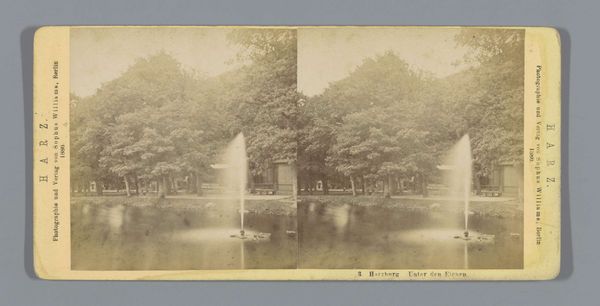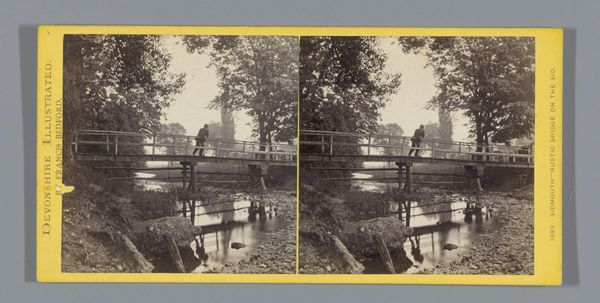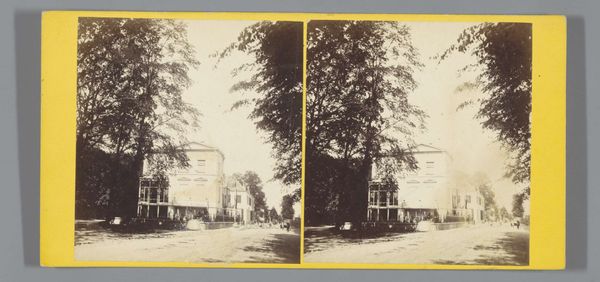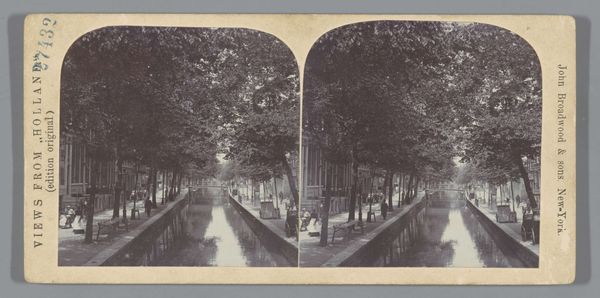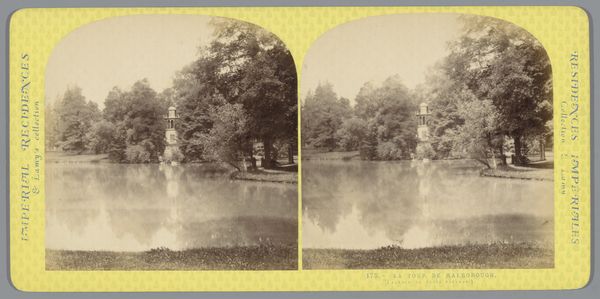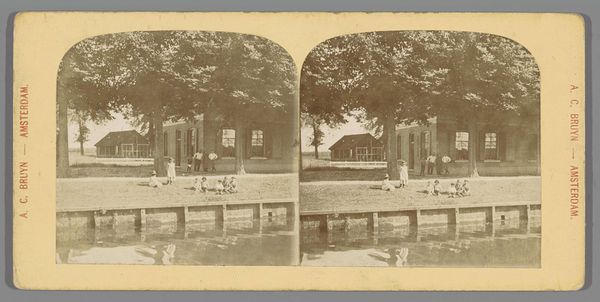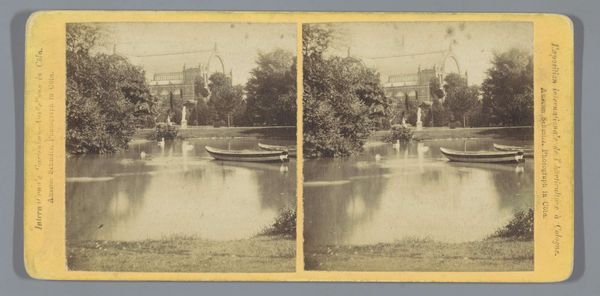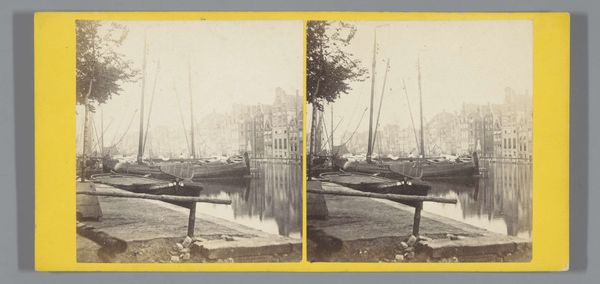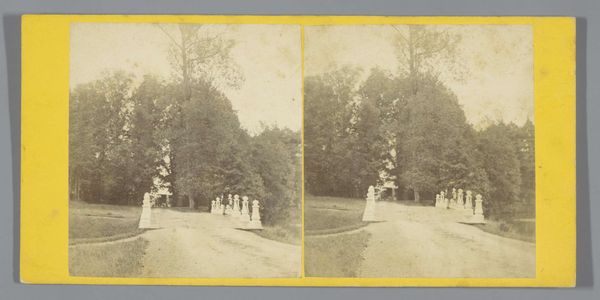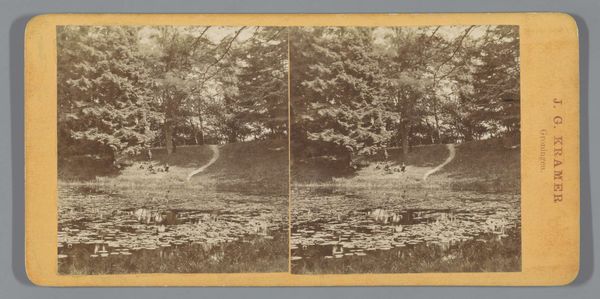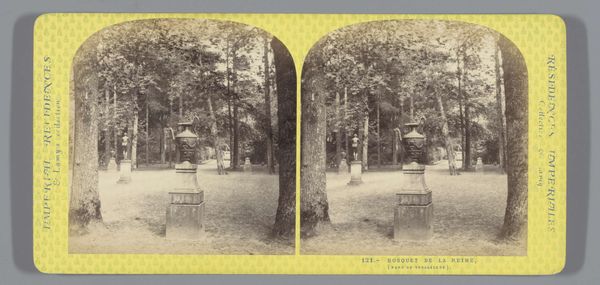
Dimensions: height 83 mm, width 170 mm
Copyright: Rijks Museum: Open Domain
Curator: Let’s discuss Pieter Oosterhuis's “Gezicht op de Sociëteitstent in het Haagse Bos,” a gelatin-silver print believed to be created between 1860 and 1885. Editor: There’s a melancholy beauty to this image. The muted tones lend it a wistful air, like a faded memory of leisure and privilege. Curator: The composition certainly lends itself to that interpretation. The photographer plays with depth, drawing our eye from the reflecting pool to the architecture, which invites a focus on structural elements. Editor: It makes me think about who had access to such spaces and such leisure. Parks became very symbolic—aren’t public parks touted as accessible by all? Who are they accessible to, really? Consider the class and social dynamics that structured society then, and to some extent, still do. Who were these 'societies' that built such ornate clubhouses? Curator: You make an interesting point regarding exclusivity. But focusing purely on the aesthetic aspects, observe how the gelatin-silver print process renders the texture of the foliage, the gradations of light on the pond's surface, how it really captures something about the atmosphere itself. Editor: And atmosphere is rarely divorced from social conditions. We cannot see a landscape and ignore the history imbued within the soil. Even seemingly benign, this photograph subtly hints at structures of power and access. The solitary figure reinforces the impression of privilege; consider who had the freedom to contemplate leisurely beside the water in that era. The Romanticism of that time promoted very skewed power relations and social roles, don't you think? Curator: Perhaps. However, the photographer’s treatment of light is compelling as it seems to create a dialectic between concealment and revelation. The Sociëteitstent is partly obscured by foliage, hinting at an interior world while foregrounding the exterior façade. Editor: So even if hidden, you have to recognize this is there in our everyday spaces. A reminder to look for the history in all spaces, and even more for the histories of all people who occupy those spaces. Curator: Ultimately, Oosterhuis gives us much to consider beyond what first meets the eye, and his meticulous compositional design underscores the complexity that belies its still surface. Editor: Agreed. This photo also presents how the past resonates, its whispers echoing within contemporary issues of power and representation.
Comments
No comments
Be the first to comment and join the conversation on the ultimate creative platform.


